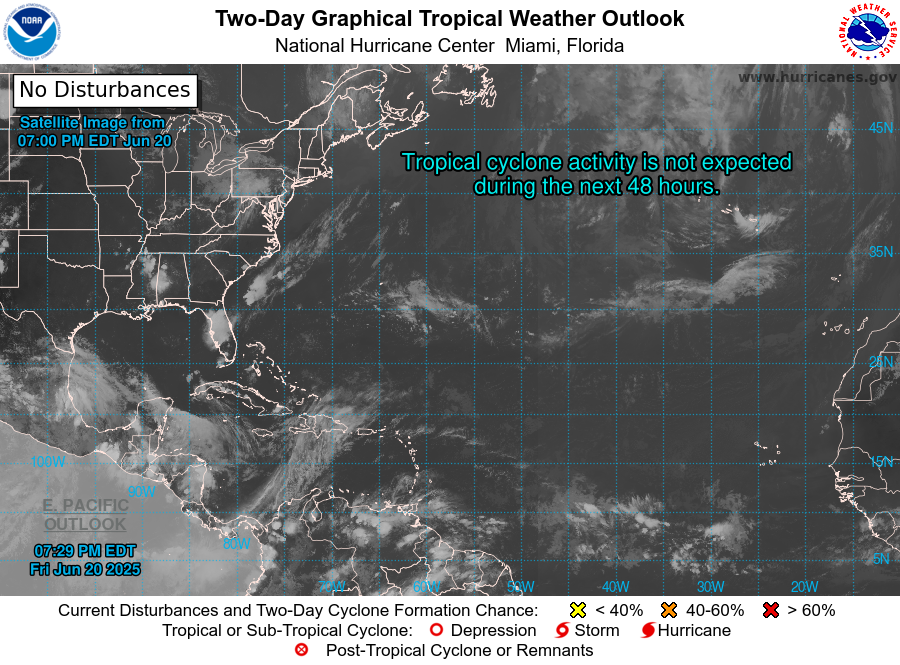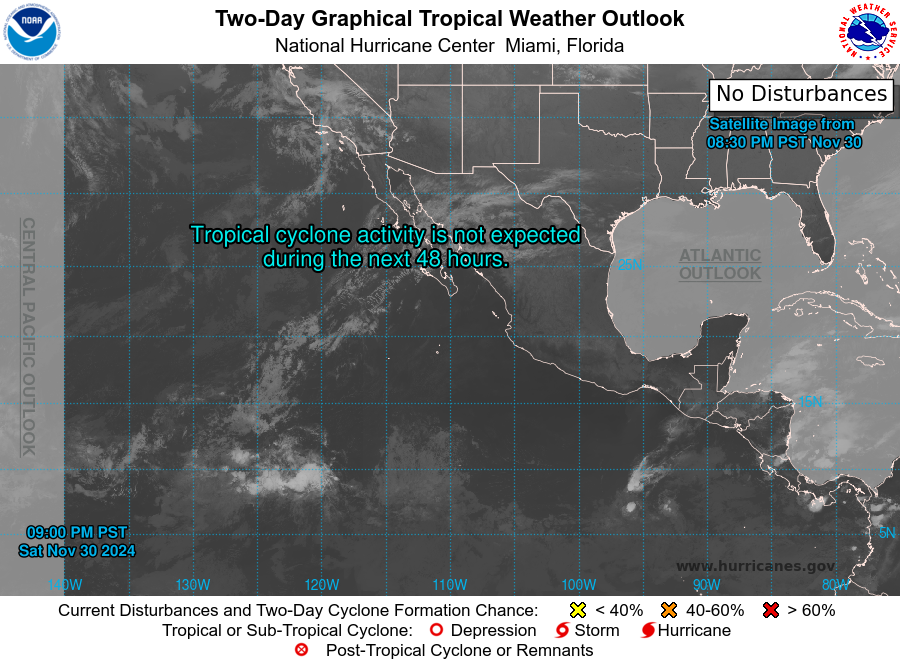Hello everyone, and happy Wednesday. We are only in the month of June, and there has already been plenty of action in the tropics. We have already had three named storms in the Atlantic Basin this season. Looking at the Atlantic, there is little to talk about besides a small tropical deterrence in the Western Atlantic. Looking at the Pacific Basin, there is more action, with two deterrence with a high chance of development in the Eastern Pacific.
Atlantic Basin

Looking at the Atlantic Basin, there is quite a lot less action than last week, with two named storms at the same time. Luckey, the two named storms dissipated before causing any major damage. Looking at the future cast, things seem to be quiet for now, with upper-level winds preventing major development. High wind shear is also present in the Atlantic Basin, which will further prevent tropical development. Looking at next week, High pressure and dry air is expected to dominate the region, which will continue to inhibit tropical development.
Pacific Basin

The satellite map of the Atlantic Basin at 1:38 PM Pacific Time on Tuesday, June 27th, 2023. // Courtesy: National Hurrican Center
Unlike the Atlantic, the Pacific Basin is quite a bit more active. We have had no named storm so far this season, but this has changed as the first named storm has just developed. There are two systems that I am keeping an eye on. The first is off the Mexican coast and is named Tropical Storm Adrian. Forecasts are showing this system moving west away from land and weakening as wind shear is expected to develop as the storm moves west. As for the other system, it is located off the coast of Nicaragua and has a 60% chance of development in the next 48 hours. Unlike Tropical Storm Adrian, this disturbance is forecasted to move in a northwest direction, putting it closer to Mexico. Those on the west coast of Mexico should keep an eye on the development of this system; however, dry air and upper-level wind shear is expected to move into the region in the next few days. If this happens, the storm will weaken, but we need to keep an eye on this system.

Looking at the central Pacific, there is no expected development in the next 7 days. This is because of the strong wind shear, cold waters of the central Pacific, and strong trade winds, which have been a bother for me on my vacation in Hawaii.
Extended Outlook
Although we have had quite the start to the hurricane season, things appear to be slowing down. The combination of wind shear, dry air, strong trade winds, and high-pressure systems in the Atlantic and Pacific basins is expected to quiet down for the foreseeable future. A strengthening El Nino is expected to form in the Pacific, which will cause more development in the Pacific and less development in the Atlantic. Little development is expected in the Atlantic and the Central Pacific. As for the Eastern Pacific, the two current storms are expected to weaken as wind shear is expected to dominate the region.
Conclusion
Overall, this has been quite the start of the hurricane season in the United States, with three named storms in the Atlantic and one stone named in the Pacific. It will be quite interesting to see how these two disturbances in the Pacific shape out. Remember always to keep an eye on the tropics between June and November.

